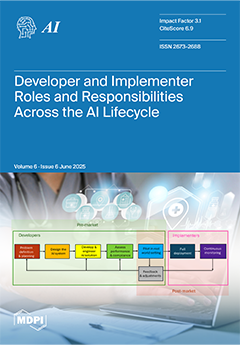Background: Industry 4.0’s development requires digitalized manufacturing through Predictive Maintenance (PdM) because such practices decrease equipment failures and operational disruptions. However, its effectiveness is hindered by three key challenges: (1) data confidentiality, as traditional methods rely on centralized data sharing, raising concerns about
[...] Read more.
Background: Industry 4.0’s development requires digitalized manufacturing through Predictive Maintenance (PdM) because such practices decrease equipment failures and operational disruptions. However, its effectiveness is hindered by three key challenges: (1) data confidentiality, as traditional methods rely on centralized data sharing, raising concerns about security and regulatory compliance; (2) a lack of interpretability, where opaque AI models provide limited transparency, making it difficult for operators to trust and act on failure predictions; and (3) adaptability issues, as many existing solutions struggle to maintain a consistent performance across diverse industrial environments. Addressing these challenges requires a privacy-preserving, interpretable, and adaptive Artificial Intelligence (AI) model that ensures secure, reliable, and transparent PdM while meeting industry standards and regulatory requirements.
Methods: Explainable AI (XAI) plays a crucial role in enhancing transparency and trust in PdM models by providing interpretable insights into failure predictions. Meanwhile, Federated Learning (FL) ensures privacy-preserving, decentralized model training, allowing multiple industrial sites to collaborate without sharing sensitive operational data. This proposed research developed a sustainable privacy-preserving Explainable FL (XFL) model that integrates XAI techniques like Shapley Additive Explanations (SHAP) and Local Interpretable Model-Agnostic Explanations (LIME) into an FL structure to improve PdM’s security and interpretability capabilities.
Results: The proposed XFL model enables industrial operators to interpret, validate, and refine AI-driven maintenance strategies while ensuring data privacy, accuracy, and regulatory compliance.
Conclusions: This model significantly improves failure prediction, reduces unplanned downtime, and strengthens trust in AI-driven decision-making. The simulation results confirm its high reliability, achieving 98.15% accuracy with a minimal 1.85% miss rate, demonstrating its effectiveness as a scalable, secure, and interpretable solution for PdM in Industry 4.0.
Full article





